ピタゴラスと教団:数学的業績の探求 定理の謎 逸話と伝説の世界
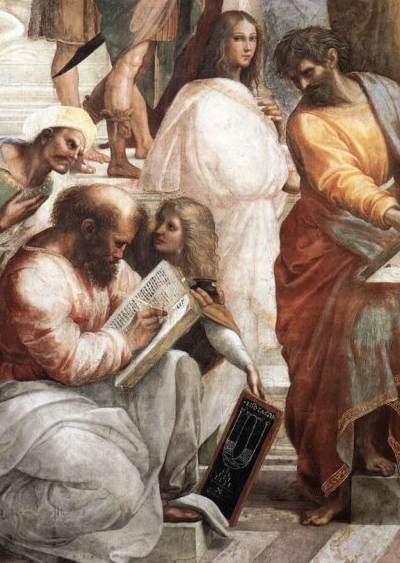
Pythagoras and the Brotherhood: Exploring Mathematical Achievements, The Mystery of Theorems, and the World of Anecdotes and Legends
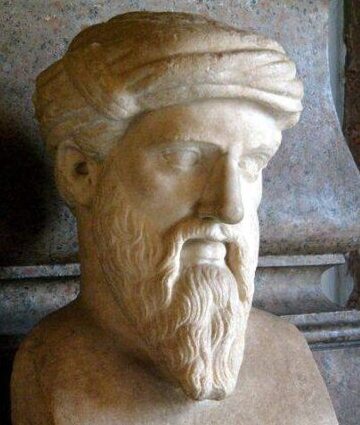
The Statue of Pythagoras (Capitoline Museums, Rome)
イントロダクション
ピタゴラスと教団について、数学的な業績や定理の謎、逸話と伝説の世界を探求してみましょう。
ピタゴラスは古代ギリシャの数学者であり、その教団は彼の理論や哲学に基づいて活動していました。
彼らの数学的な発見や定理は、今日でも数学の基礎となっており、その謎や逸話は数々の興味深い話で満ちています。
また、彼らの教団の秘密や信念についても探求していきます。
ピタゴラスと教団の世界を通して、数学の魅力と奥深さに迫ってみましょう。
Introduction
Let’s delve into the world of Pythagoras and his cult, exploring their mathematical achievements, the mysteries of their theorems, and the realm of anecdotes and legends.
Pythagoras was an ancient Greek mathematician, and his cult operated based on his theories and philosophy.
Their mathematical discoveries and theorems still form the foundation of mathematics today, while their enigmas and anecdotes abound with intriguing tales.
Moreover, we’ll explore the secrets and beliefs of their cult.
Through the lens of Pythagoras and his cult, let’s uncover the allure and profundity of mathematics.
ピタゴラスとは誰か?
ピタゴラスは、古代ギリシアの宗教家であり数学者です。
「サモスの賢人」とも呼ばれています。
ピタゴラスは、古代ギリシャ時代に、トルコ沿岸のイオニア地方にあるサモス島に生まれました。
宝石細工の父親を持ち、その息子として生まれました。
レバノンのティルス出身の父親であり、近隣には、有名な数学者のタレスがいます。
ピタゴラスは、若い時から知識を求めて、島を出ています。
古代のオリエントの世界を巡り、エジプトで幾何学や宗教の密議を勉強、フェニキアでは、算術と比率を、そして、カルデア人からは天文学を学んでいます。
ポルピュリオスの伝記によると、ゾロアスター教の司祭のところでも勉強し、インドやイギリスにも訪れていると伝えられています。
Who is Pythagoras?
Pythagoras was an ancient Greek religious leader and mathematician, also known as the “Sage of Samos.”
Born on the island of Samos, located along the coast of Turkey in the Ionian region, during ancient Greece.
He was born as the son of a jeweler and a father from Tyre, Lebanon, where the renowned mathematician Thales also hailed from.
From a young age, Pythagoras sought knowledge, eventually leaving his island home to explore the ancient Orient.
He studied geometry and religious mysteries in Egypt, arithmetic and proportions in Phoenicia, and astronomy from the Chaldeans.
According to Porphyry’s biography, he even studied with Zoroastrian priests and traveled to India and Britain.
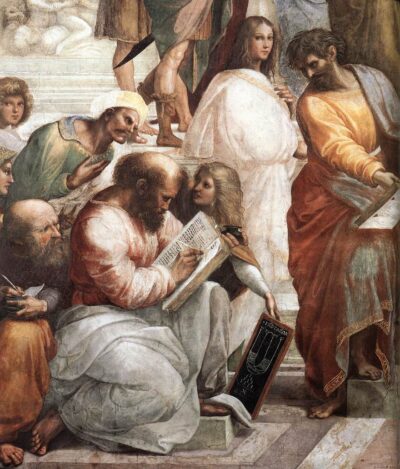
Pythagoras in The School of Athens (Raphael, 1509)
ピタゴラス教団
数の性質を研究することにより、宇宙の真理を追究するというピタゴラス教団を、彼の思想のもと創設。教団に入るのは、とても難関な数学のテストがあり、数学に関して適性がある者だけが抜擢されていました。
教団は、古代の世界の中で、最も高く評価され、名前を馳せた数学の研究機関になりました。
天文学や音楽、数学などを探求し、科学史に残るほど。探求は彼らにとって、教義を求める取り組みを、支えるものでした。
ピタゴラスは、20年ほど放浪して、当時の数学の知識を身につけ、ふるさとのサモス島に戻ります。
しかし、サモス島では、僭主(せんしゅ)ポリュクラテスの抑圧の支配下にあったため、学問の研究ができず、イタリアの半島の植民市に向かいます。
その地で、巧みな話術でたくさんの人を虜にし、南イタリアのクロトンで、自分の考えに共感する人々と一緒にピタゴラス教団を樹立しました。
後に、地元の権力者の保護を得て、非常に大きな力を持ち、100人単位の信者を集めています。教団では、地球の球体説や自転説などを説いています。
教団のメンバーは、ピタゴラスをトップに色んな戒律のもと、禁欲で厳格な暮らしをしています。
また、それぞれの財産は、共有することになっており、その財産を学問の研究にあてて、排他的な環境のもと研究に励みました。
その後、ピタゴラスの女性の弟子にあたるテアノと結婚して、大変、盛り上がり賑わいを見せていますが、後に、教団の入団テストに落ちた人達が恨らまれ、暴徒により教団は壊れています。
The Pythagorean Brotherhood
Founded on the principle of seeking the truths of the universe through the study of number properties, the Pythagorean Brotherhood was established based on Pythagoras’s philosophy. Joining the Brotherhood required passing a rigorous mathematical test, ensuring that only those with an aptitude for mathematics were selected.
The Brotherhood became one of the most esteemed and renowned institutions for mathematical research in the ancient world.
They delved into disciplines such as astronomy, music, and mathematics, leaving a lasting mark on the history of science. For them, exploration was the foundation of their quest for doctrine.
Pythagoras spent about twenty years wandering, acquiring knowledge of mathematics of his time, before returning to his homeland of Samos.
However, under the oppressive rule of the tyrant Polycrates, scholarly pursuits were stifled on Samos, prompting Pythagoras to set sail for the colonies on the Italian peninsula.
There, he captivated many with his eloquence and established the Pythagorean Brotherhood in Croton, southern Italy, alongside like-minded individuals who resonated with his ideas.
Later, with the patronage of local authorities, the Brotherhood gained significant influence, amassing followers in the hundreds. They advocated for theories such as the spherical shape of the Earth and its rotation.
Members of the Brotherhood adhered to various strict rules under Pythagoras’s leadership, leading ascetic and disciplined lives.
Their possessions were shared, and resources were dedicated to scholarly pursuits, fostering an environment conducive to exclusive research.
Subsequently, Pythagoras married Theano, one of his female disciples, leading to a period of great prosperity and vibrancy. However, resentment from those who failed the Brotherhood’s entrance test led to its dissolution at the hands of a mob.

Tetractys
ピタゴラスの数学的業績
根源を数であると説き、平方根?を発見したり、さらに音階が比率で構成されていることなどを発見しています。
ピタゴラスの定理
直角三角形の斜辺の長さをC、直角をはさむ2辺の長さをA、Bにし、等式が成り立り、?これをピタゴラスの定理と呼びます。
これは、ピタゴラスが直角二等辺三角形のタイルの床を見て、この定理に気づいたと言われていますが、実際は、ピタゴラス本人が発見し、どのように関わったかなど、詳しくはわかっていません。
Pythagoras’s Mathematical Achievements
Pythagoras is credited with groundbreaking discoveries, such as proclaiming that numbers are the essence of all things, uncovering square roots, and recognizing that musical scales are constructed based on ratios.
Pythagorean Theorem
In the Pythagorean Theorem, denoting the length of the hypotenuse of a right-angled triangle as ( C ) and the lengths of the two sides adjacent to the right angle as ( A ) and ( B ), an equation holds true, which is known as the Pythagorean Theorem.
This theorem is said to have been inspired by Pythagoras observing the tiled floors of right-angled isosceles triangles. However, the exact circumstances of his discovery and his involvement remain unclear.
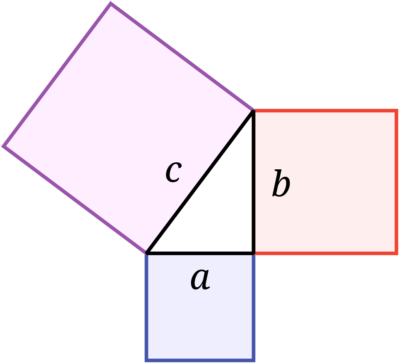
2辺 (a, b) 上の2つの正方形の面積の和は、斜辺 (c) 上の正方形の面積に等しくなる。
数式

The sum of the areas of two squares on the sides (a, b) equals the area of the square on the hypotenuse (c). This relationship is often expressed mathematically as:
[ a^2 + b^2 = c^2 ]
「数は全てのものの本質である」とは?
ピタゴラスは、色んな全ての事象には数が関わって存在していること、そして、宇宙は、人間がメインの考えではなく、数のルールに倣うとして、計算や数字で解明できるものだと説きました。
彼は、音色の構成から星の軌道まで、たくさんの事柄に、数が関わっていることに気が付き、宇宙など全ては数から成り立つと言い切っています。
平方根の概念の発見
ピタゴラス教団に所属するメタポンタムのヒッパソスが、2の平方根を分数として表現しようと試していたときに、無理数が発見されたと言われています。
ヒッパソスにより、2の平方根の無理性を証明したとされています。
しかし、ピタゴラスは、有理数の絶対性を信じていたので、ヒッパソスが見つけた無理数を受けいれることが難しかったようです。
ピタゴラスらは、無理数を口にできないという意味のアロゴンという名で呼び、存在を認められず、ヒッパソスを溺死の刑に処しています。
ピタゴラス数列
ピタゴラスは、根源を数だと唱えましたが、それは音楽でいうと、和音が一絃琴の時、絃の長さが数比例すること、また、形あるのの点をいくつか組み合わせると数列が出来上がることなど、発見しています。
ピタゴラス学派は、音楽の理論の究明より3つの数A、B、Cが、A-B=B-Cを満せば、A、B、Cは等差数列であり、A:B=B:Cを満せば、A、B、Cは等比数列であるとしています。
そして、(A-B):(B-C)=A:Cを満せば、A、B、Cは調和数列であることを発見しています。
“What does ‘Numbers are the essence of all things’ mean?
Pythagoras believed that numbers were present in all phenomena and that the universe, rather than being primarily a human construct, adhered to the rules of numbers. He argued that everything, from the composition of musical tones to the orbits of stars, was interconnected with numbers, asserting that the universe was fundamentally built upon them.
Discovery of the concept of square roots
It is said that Hippasus, a member of the Pythagorean sect, discovered irrational numbers while attempting to express the square root of 2 as a fraction. Hippasus is credited with proving the irrationality of the square root of 2. However, Pythagoras, staunch in his belief in rational numbers, found it difficult to accept the existence of irrational numbers. Unable to acknowledge the existence of irrational numbers, Pythagoras and his followers referred to them as ‘alogon,’ meaning inexpressible, and are said to have sentenced Hippasus to death by drowning.
Pythagorean sequence
Pythagoras posited that numbers were the fundamental elements of existence. He discovered that in music, for example, when a chord is played on a monochord, the lengths of the strings are in numerical proportion, and that arranging points in space creates numerical sequences. The Pythagorean school asserted that if three numbers, A, B, and C, satisfy the equation A-B=B-C, they form an arithmetic sequence, and if A:B=B:C, they form a geometric sequence. Furthermore, if (A-B):(B-C)=A:C, they constitute a harmonic sequence.”
ピタゴラスの哲学思想と教育
情報が流出しないよう厳格にしており、違反者には死刑にするなどの徹底ぶりな教育のもと、内密に組織を動かし研究していました。
ピタゴラスの哲学思想の特徴
ピタゴラスの哲学は、道教やゾロアスター教のように、二元論がベースになっており、人間が認識できる全ての物事を考える10個の項目に対して、対立するものをはっきりと示しました。
彼の輪廻転生や数学に対する考えは、後に大きな影響をプラトンにも与えています。
また、アリストテレスは、「形而上学」で、対立するものを再び現しています。
輪廻転生に関しては、オルペウス教が思想に変化を与えていたともされています。
ピタゴラスの形而上学的な概念とは?
ピタゴラスは、数の親和性や統一性を解せないほどに重きを置き、完全数や友愛数を宗教的に崇めています。
そのため、ピタゴラス教団の中の1人が無理数を見つけた際には、見つけた者を死刑にするかわりに、それを認めました。
整数や分数でも、表せない奇妙な数があることが、彼の思想や考えを根幹から否定するものでした。
ピタゴラスの教育方法
ピタゴラスは、とても厳しい秘密主義の組織であるピタゴラス教団を創設しましたが、内部の情報を外に流出することを厳格に禁じ、違反した者には、船から海へと突き落とし、死刑にするほど徹底していました。
それだけ内密にされていたため、教団の内側のことや、研究した記録など、ピタゴラス自身の著作物までも、後世に一つも伝わっていません。
そのため、肖像画や彫刻などもなくイメージで作られ、実際のピタゴラスの顔や雰囲気がわかっていません。
後に、個人の言行や人物像など、教団が破滅した後に、各地に離散した弟子たちにより、伝記や著作、数学に関する本などの間接的な情報が出来ています。
後に、彼の思想が、古代の宗教・哲学・自然学全般に影響を与えています。
Pythagoras’ Philosophical Ideas and Education
Under a rigorous educational system where information was tightly controlled to prevent leaks, severe punishments such as death penalties were imposed on violators. This clandestine organization conducted its research secretly.
Characteristics of Pythagoras’ Philosophical Ideas
Pythagoras’ philosophy, akin to Taoism and Zoroastrianism, was rooted in dualism, clearly delineating opposing elements for each of the ten categories encompassing all perceptible phenomena.
His views on reincarnation and mathematics later had significant influence on Plato, with Aristotle revisiting the concept of opposition in his “Metaphysics.”
Regarding reincarnation, the Orphic religion is also believed to have influenced his thinking.
What is Pythagoras’ Metaphysical Concept?
Pythagoras placed great importance on the harmony and unity of numbers, revering perfect numbers and amicable numbers religiously. Consequently, when a member of the Pythagorean sect discovered irrational numbers, instead of sentencing the discoverer to death, as was the norm, Pythagoras chose to acknowledge it.
The existence of strange numbers that couldn’t be expressed as integers or fractions was something that fundamentally challenged his beliefs and ideas.
Pythagoras’ Educational Methods
Pythagoras established the Pythagorean sect, an extremely secretive organization. Information leakage was strictly prohibited, and violators were ruthlessly punished, often thrown off ships into the sea to meet their demise.
Because of this extreme secrecy, virtually no internal information about the sect, its research, or even Pythagoras’ own writings has survived to this day. Consequently, no portraits, sculptures, or accurate depictions of Pythagoras’ face or demeanor exist.
Later, indirect information about his life, character, and teachings surfaced through scattered disciples who dispersed across various regions after the sect’s downfall, contributing to biographies, writings, and mathematical treatises.
His philosophical ideas later had a profound impact on ancient religion, philosophy, and natural science as a whole.
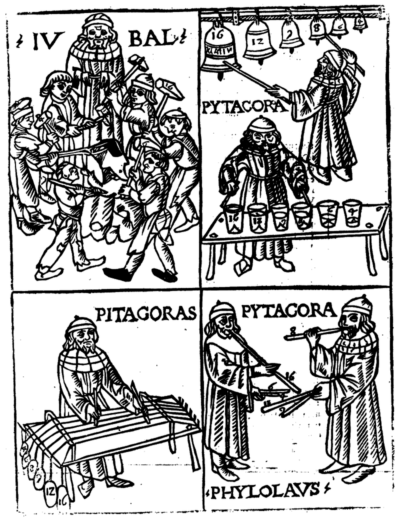
Pythagoras studying pitch Top left: Investigating the sound of hammers of different weights Top right: Striking bells of proportional sizes and cups of various amounts of water Bottom left: Plucking strings with weights of different weights hanging from them Bottom right: Experimenting with the sound of flutes of different sizes
ピタゴラスの逸話と伝説:謎と魅力の数学者
彼には数々の逸話や伝説が残されており、その人物像は謎めいています。
ここでは、ピタゴラスにまつわる魅力的なエピソードに迫ってみましょう。
著名な逸話の探求
ピタゴラスの中でも有名な逸話の一つに、数学の定理を見つけた際の逸話があります。
彼はその喜びから、思わず裸で街を駆け回ったとされています。
数学への情熱が彼を駆り立て、新たな発見に喜びを見出していたのです。
また、音楽にも熱心で、道端で奏でた音楽が牛の群れを踊らせたという逸話も残されています。
その音楽が自然の調和を表現していたのかもしれません。
謎めいた伝説と実像
一方で、ピタゴラスの伝説と実像には多くの謎が存在します。
彼の教団は秘密主義的であり、教義や活動についての詳細は明かされていません。
さらに、ピタゴラス自身の著書が存在せず、その業績や思想は後世の資料からのみ推測されることが多いです。
彼自身は神聖視されていたとも伝えられており、その教団は信仰の対象となっていました。
しかしながら、ピタゴラスの実際の姿や教団の活動については、未だに多くの謎に包まれています。
ピタゴラスの逸話と伝説は、単なる数学者としての側面だけでなく、彼の人間性や教団の神秘性にも興味を惹かれます。
彼がどのような人物であり、彼の教団が何を探求していたのか、その謎めいた魅力は今も私たちを引き寄せてやみません。
ピタゴラスの数秘術の世界
ピタゴラスの数秘術は、生年月日の数字を足し合わせて意味を見出す占い法です。
彼は「万物の源は数である」と考え、整数を神聖な存在とみなしました。
1から10の数字にはそれぞれ意味があり、人々はこれを用いて占いや考え方を行いました。
たとえば、1974年7月18日生まれならば、数字を足し合わせて10になり、「完全・宇宙」を意味するとされました。
ピタゴラスの食の矛盾
ピタゴラスは傑出した数学者として知られていますが、実は豆が大の苦手でした。
彼の教団では、全員が豆を食べないよう強制されたとされています。
当時の人々にとっては理解できない癖であり、その理由は多くの憶測を呼び起こしました。
アリストテレスによれば、「豆が性器に似ている」「地獄の門に似ている」といった風説も存在していました。
健康上の理由や政治的な背景も考えられており、ピタゴラスの食の習慣には多くの謎が残されています。
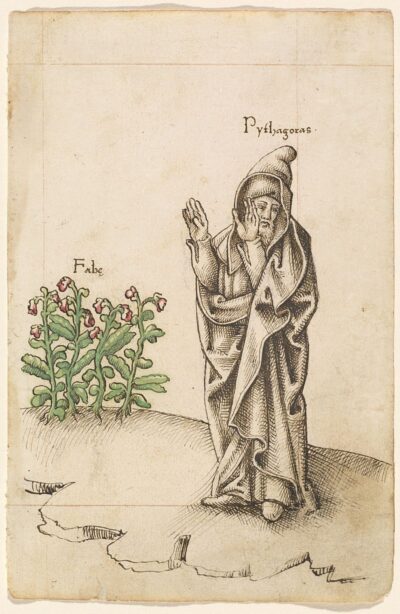
Pythagoras turns away from the beans
まとめ
ピタゴラスは数学の分野で多大な業績を残し、その影響は現代にまで及んでいます。
彼の定理は数学の基礎となり、幾何学や物理学において重要な役割を果たしています。
また、ピタゴラス教団は彼の教えを広めるために設立され、数学の研究や教育に大きな影響を与えました。
ピタゴラスの逸話や伝説も多く残されており、彼の人物像に対する興味は今もなお根強いです。
現代の数学者たちは彼の業績を尊重し、彼の研究を発展させています。
ピタゴラスの影響は数学だけでなく、科学全般にも及んでおり、彼の功績は計り知れません。
彼の業績と教えは、数学の歴史において不朽のものとなっています。
Pythagoras: Anecdotes and Legends – The Enigmatic Mathematician
Pythagoras is shrouded in numerous anecdotes and legends, adding to the mystique surrounding his persona. Let’s delve into some captivating episodes associated with Pythagoras.
Exploring Famous Anecdotes
One of the most famous anecdotes about Pythagoras involves his discovery of a mathematical theorem. It is said that he was so elated by this revelation that he ran through the streets naked. His passion for mathematics drove him to find joy in new discoveries.
Moreover, he was passionate about music, and there is a tale of his roadside performance causing a herd of cattle to dance. Perhaps his music expressed the harmony of nature.
Mysterious Legends and Reality
On the other hand, there are many mysteries surrounding Pythagoras’ legends and his true character. His sect was secretive, with details of its doctrines and activities remaining undisclosed. Furthermore, no writings authored by Pythagoras himself have survived, leaving his achievements and philosophies largely inferred from later sources.
He was revered almost as a divine figure, and his sect became objects of worship. However, much remains unknown about the actual Pythagoras and the activities of his sect.
The anecdotes and legends surrounding Pythagoras pique our interest not only in his role as a mathematician but also in his humanity and the mystique of his sect.
Pythagoras’ Numerology
Pythagoras’ numerology involves interpreting the meaning behind numbers obtained by adding the digits of one’s birthdate. Believing that “all is number,” he regarded integers as sacred entities.
Each digit from 1 to 10 held significance, and people used them for divination and thought processes. For instance, if one were born on July 18, 1974, the digits would sum up to 10, representing “perfection” or “the universe.”
Pythagoras’ Dietary Contradiction
While renowned as a brilliant mathematician, Pythagoras had an aversion to beans. It’s said that his sect strictly forbade the consumption of beans. This eccentricity, inexplicable to his contemporaries, led to various speculations.
According to Aristotle, there were rumors associating beans with genitalia or likening them to the gates of hell. Health concerns or political reasons might also have been factors, leaving Pythagoras’ dietary habits shrouded in mystery.
Conclusion
Pythagoras left a profound legacy in the field of mathematics, which continues to influence modern scholars. His theorem forms the basis of mathematics, playing a crucial role in geometry and physics.
Moreover, the Pythagorean sect, established to disseminate his teachings, had a significant impact on mathematical research and education.
The anecdotes and legends surrounding Pythagoras continue to fascinate, emphasizing his enduring influence not only on mathematics but also on the broader scientific community.
His achievements and teachings stand as timeless contributions to the history of mathematics, leaving an indelible mark on science as a whole.
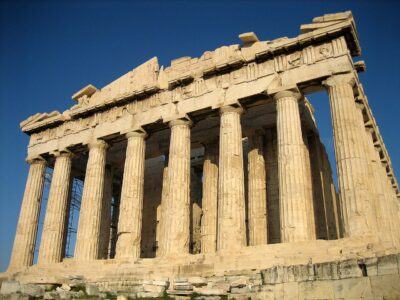
Warning: Undefined variable $comment_form_sns_tags in /home/ktsky/philosophy-kayak.com/public_html/wp-content/themes/shaper/comments.php on line 27
1件のコメントがあります